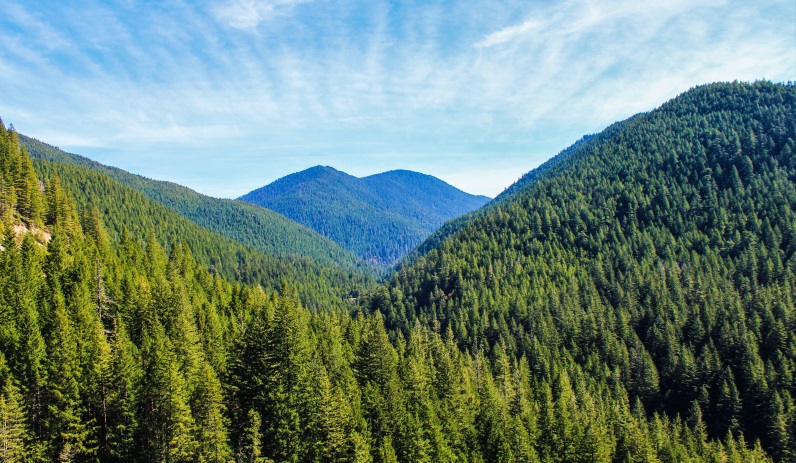Weighing the Merits of Regulated Recreation
It’s the fourth of July and I’m parking about a half-mile away from “the gate” that separates the Opal Creek ancient forest from its adjacent parking lot. The Three Pools area down the road reached its maximum capacity hours ago, and the traffic has spilled out toward Opal Creek like water boiling over the edges of a pot. I walk toward my home in Jawbone as a face in the crowd, repulsed somewhat by the sheer magnitude of the day’s visitors but also grateful to be living in a place where so many people are not only passionate about the outdoors but are also free to explore it. I can’t help but feel a kinship with the families and couples and kids that I pass by, each of us drawn here by the forest’s primeval beauty, the cool and turquoise water, the celebration of our nation’s independence.
Residence in a place like Jawbone Flats gives one a certain insight into the changes tied to the shifts of seasons, and beyond the undulations of flora, fauna, and fungi, there is also the ebb and flow of human traffic through the area. Winter sees the occasional adventurer, cross-country skier, or snow-shoer, while summer buzzes with the activity of thousands of day-trippers, roadside campers, and backpackers. And upon witnessing the scale of destruction and degradation wreaked upon the forest by its summertime visitors, the first reaction is sometimes one of shock, bafflement, and ultimately disdain. One might experience this and ask: why doesn’t someone institute more regulations on the area? The question, as is so often the case, is more complicated than it might seem. In search of answers, I turned to some of the godparents of modern conservation and the philosophy of wilderness.
The argument for environmental regulation is well established, with influential figures such as Rachel Carson and Garrett Hardin warning of the perils of unfettered use of “common” areas. And there are certainly plenty of contemporary examples that appear to substantiate Hardin’s claim that “freedom in a commons brings ruin to all.” From the regularly-littered Three Pools area down the road to the graffiti-ed walls of the Grand Canyon, our public places have too often been over-used and even abused. But a crucial factor is education, or lack-thereof. Without any mandatory checkpoint for an area’s visitors, there aren’t many opportunities to distribute information about low-impact camping or to ensure that wilderness area restrictions are obeyed. A poorly put-out fire at one campsite could easily sweep through this little canyon.
On the other hand, if you lean more toward the libertarian view on the nature of wilderness, one of its most crucial elements is the liberation from the institutions of man. Edward Abbey once wrote: “We cannot have freedom without leagues of open space beyond the cities, where boys and girls, men and women, can live at least part of their lives under no control but their own desires and abilities, free from any and all direct administration by their fellow men.” There are few places left like the Opal Creek Scenic Recreation and Wilderness Area – places where one and all can come and recreate (almost) freely – and perhaps we should attempt to hold on to at least a handful of them. With already limited resources, federal agencies probably want to trammel the area as little as we do. And when one considers the geographic extent of ecological impact within the Opal Creek watershed, it is reassuring to realize that vast swaths of forest are virtually untouched by humans. So maybe there is a way to mitigate the inevitable impact of human activity in the area without stretching federal dollars even further and letting go of a part of what makes this wilderness so extraordinary.
The search for a middle path leads me to Aldo Leopold and his articulation of the “land ethic” that is seemingly lacking in modern recreation culture. As Leopold wrote, “The hope of the future lies not in curbing the influence of human occupancy – it is already too late for that – but in creating a better understanding of the extent of that influence and a new ethic for its governance.” But is it possible or even beneficial to try to force a new ethic or cultural value upon society? And how could anyone go about doing so? The crux may again lie with information. Ideally, spreading knowledge about the impacts of recreation and methods of minimizing those impacts would compel the public to utilize their common spaces more responsibly. As Jawbone Flats residents we can help by engaging passers-by, but our hands are often tied up in the necessary tasks of the day to day.
So while many questions remain, one outcome does seem probable. The data-gathering process preliminary to a camping-permit system has already begun, and it is likely going to reflect a good deal of trashing of the area – especially around the campsites. Patrolling of the area by government agents has already increased, and will likely continue to do so. But maybe the people who are loving the wilderness to death can begin to tread more lightly. Perhaps people could forego their campfires – if only for self-interest and preservation’s sake – without the threat of fines. Maybe folks could at least pack out what they’ve dragged into these woods. If we start to treat this ancient forest like the fragile treasure that it is, it won’t be necessary to call in big brother to save us from ourselves.


